Meeting the demands of high-value markets requires precision, innovation, and a commitment to excellence. In these markets, where buyers prioritise superior taste, appearance, and nutritional content, achieving premium crop quality is more than an aspiration—it’s a necessity. Farmers are leveraging advanced agricultural practices to ensure their produce not only meets but exceeds these expectations, all while adhering to sustainable and eco-friendly methods.
For growers seeking entry into high-value markets, the stakes are high. The journey involves navigating strict quality standards, maintaining consistency, and overcoming environmental challenges. By integrating innovative techniques and adopting cutting-edge inputs, farmers can elevate their crops to the premium level demanded by these lucrative markets.
Why Crop Quality Matters for High-Value Markets
High-value markets, including gourmet retailers, export chains, and niche organic sectors, impose stringent requirements on crop quality. These markets value attributes such as superior taste, consistent size, vibrant colour, and nutritional density. In some cases, even minor deviations in appearance or sweetness levels can lead to rejection or price penalties.
The ability to consistently deliver crops that meet these exacting standards translates into significant financial rewards. Premium-quality produce commands higher prices, attracts loyal buyers, and opens doors to exclusive market opportunities. Moreover, crops with extended shelf life and resilience during transport minimise losses, providing added value to both producers and distributors.
Key Considerations:
- Market Demands: Buyers prioritise size uniformity, taste consistency, and enhanced visual appeal.
- Economic Rewards: High-value crops secure competitive pricing, improving profitability.
- Long-Term Relationships: Consistently meeting quality benchmarks fosters trust and loyalty among buyers.
Farmers aiming to thrive in high-value markets must adopt innovative methods to consistently deliver these results.
Elevating Nutritional Value
The modern consumer is more health-conscious than ever before, seeking produce enriched with essential nutrients and health benefits. Crops grown for high-value markets often emphasise nutritional density, measured in terms of higher °Brix levels, vitamin content, and mineral enrichment. These attributes not only appeal to health-conscious buyers but also differentiate premium produce from conventional options.
To achieve these nutritional benchmarks, farmers employ advanced agricultural practices that enhance plants’ ability to absorb and utilise nutrients effectively. Biostimulants are key components of these strategies.
Key Highlights:
- Nutrient Uptake: Advanced techniques improve the absorption of vital minerals like calcium, magnesium, and potassium, enriching crop health.
- Flavour and Health: Higher °Brix levels contribute to superior sweetness, a key factor in consumer preference, while enriched vitamin profiles improve overall appeal.
- Resilience Across Conditions: By optimising nutrient delivery, farmers ensure consistently high nutritional quality, even under suboptimal growing conditions.
Premium crops enriched with nutritional benefits cater to a growing segment of buyers willing to pay more for health-focused produce.
Ensuring Visual Appeal
In high-value markets, first impressions matter. The visual appeal of produce—its size, uniformity, colour, and overall freshness—plays a pivotal role in its marketability. Buyers often reject produce that fails to meet strict aesthetic standards, leading to waste and financial losses for farmers.
Modern agricultural practices focus on delivering visually consistent harvests by enhancing crop development at every stage. From uniform ripening techniques to stress-mitigation strategies, farmers can ensure their produce meets the visual expectations of discerning buyers.
Strategies for Success:
- Uniform Ripening: Techniques like controlled irrigation and advanced biostimulants help synchronise crop maturation, reducing waste and improving pack-out rates.
- Colour Enhancement: Nutrient solutions rich in specific micronutrients enhance the pigmentation of fruits and vegetables, increasing their market appeal.
- Stress Tolerance: Heat, drought, and salinity stress can affect the visual quality of crops. Targeted solutions ensure crops maintain their aesthetic integrity even under challenging conditions.
By prioritising visual consistency, farmers can maximise their returns and build a strong reputation in premium markets.
Overcoming Environmental Challenges
Environmental stressors such as drought, salinity, and high temperatures are major threats to achieving premium crop quality. These challenges can lead to yield reductions, quality degradation, and inconsistencies in size and taste—all of which are unacceptable in high-value markets.
Innovative agricultural solutions are empowering farmers to address these issues head-on. By enhancing water retention, nutrient absorption, and resilience to extreme temperatures, these solutions ensure that crops maintain their quality and yield potential, regardless of environmental pressures.
Proven Benefits:
- Drought Resilience: Advanced water-retention technologies enable plants to maintain growth and fruit development even during prolonged dry spells.
- Salinity Management: Solutions that regulate the uptake of sodium and potassium balance ionic content in plants, improving texture and sweetness.
- Heat Stress Mitigation: Techniques that enhance thermotolerance prevent damage during flowering and fruit-setting stages, safeguarding yields.
Farmers who adopt these strategies can produce crops that thrive under adverse conditions, ensuring consistent quality and securing a competitive edge in high-value markets.
Sustainability and Market Advantage
Sustainability is no longer a bonus—it’s a requirement in high-value markets. Discerning buyers and consumers are increasingly prioritising eco-friendly practices, seeking produce that aligns with their environmental values. By adopting sustainable methods, farmers can not only enhance their crop quality but also gain a strategic advantage in these markets.
Sustainable farming practices contribute to soil health, reduce chemical inputs, and minimise the environmental footprint of agriculture. Buyers are willing to pay a premium for produce grown using such responsible methods, recognising the added value they bring to their supply chains.
Sustainability in Practice:
- Chemical Reduction: Using biostimulants reduces reliance on synthetic inputs while maintaining productivity.
- Water Efficiency: Drip irrigation systems and water-retention treatments optimise usage, conserving resources without compromising yields.
Farmers who position themselves as sustainability leaders can attract eco-conscious buyers and expand their market reach.
Achieving Long-Lasting Shelf Life
In high-value markets, where supply chains can stretch across countries and continents, shelf life is a critical factor. Crops must retain their freshness, taste, and nutritional value from farm to consumer. Poor shelf life not only leads to losses but can also tarnish a farm’s reputation.
Innovative post-harvest treatments and pre-harvest practices help extend the longevity of premium crops. By focusing on structural integrity, moisture retention, and oxidative resistance, farmers can ensure their produce remains marketable for extended periods.
Biostimulants have a role to play in helping extend the longevity of crops. By boosting their natural defence mechanisms for abiotic stresses as well as improving nutrient uptake, biostimulants provide crops with the mechanisms for improving quality traits.
By addressing shelf-life challenges, farmers can enhance their market competitiveness and reduce waste.
The Future of Premium Agriculture
As consumer preferences evolve, farmers targeting high-value markets must remain ahead of the curve. This requires a commitment to adopting the latest agricultural innovations and continuously refining their practices. From embracing data-driven farming techniques to exploring regenerative agriculture, the future of premium crop production lies in adaptability and innovation.
Emerging Trends:
- Data Integration: Advanced monitoring systems and AI-powered tools allow farmers to make precise decisions for optimising crop quality.
- Regenerative Practices: Building biodiversity ensures long-term productivity and resilience.
- Climate Adaptation: Exploring how the role of biostimulants can maximise performance in a changing climate through greater nutrient use efficiency and building tolerance to abiotic stresses.
Achieving premium crop quality is not just about meeting current demands; it’s about building resilience and securing a position in the future of agriculture. By leveraging innovative methods and focusing on sustainability, farmers can unlock the full potential of their crops and thrive in high-value markets.
By integrating innovation into their farming systems, growers can not only meet but exceed the expectations of high-value markets, securing a competitive edge and building a sustainable future.




